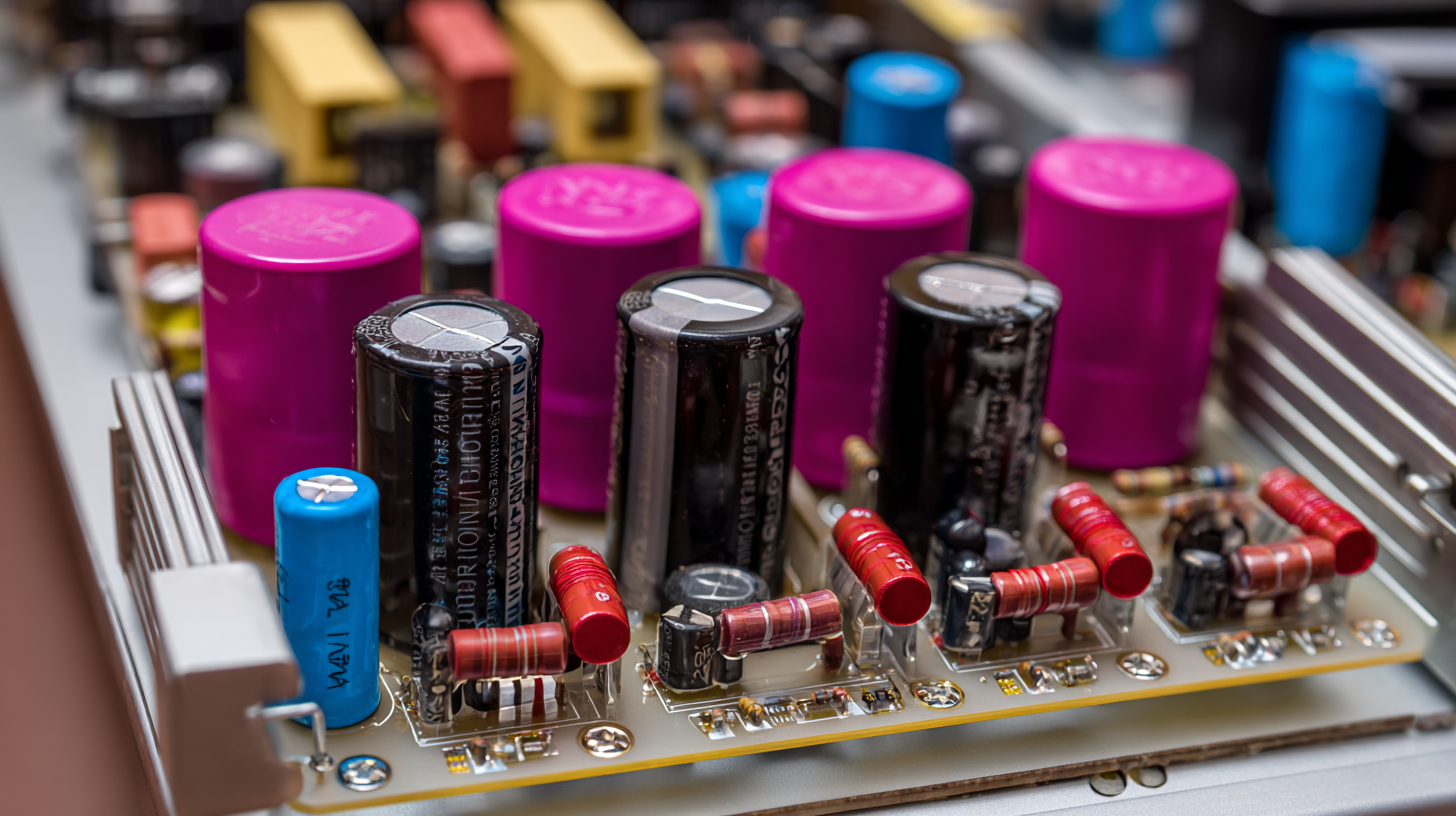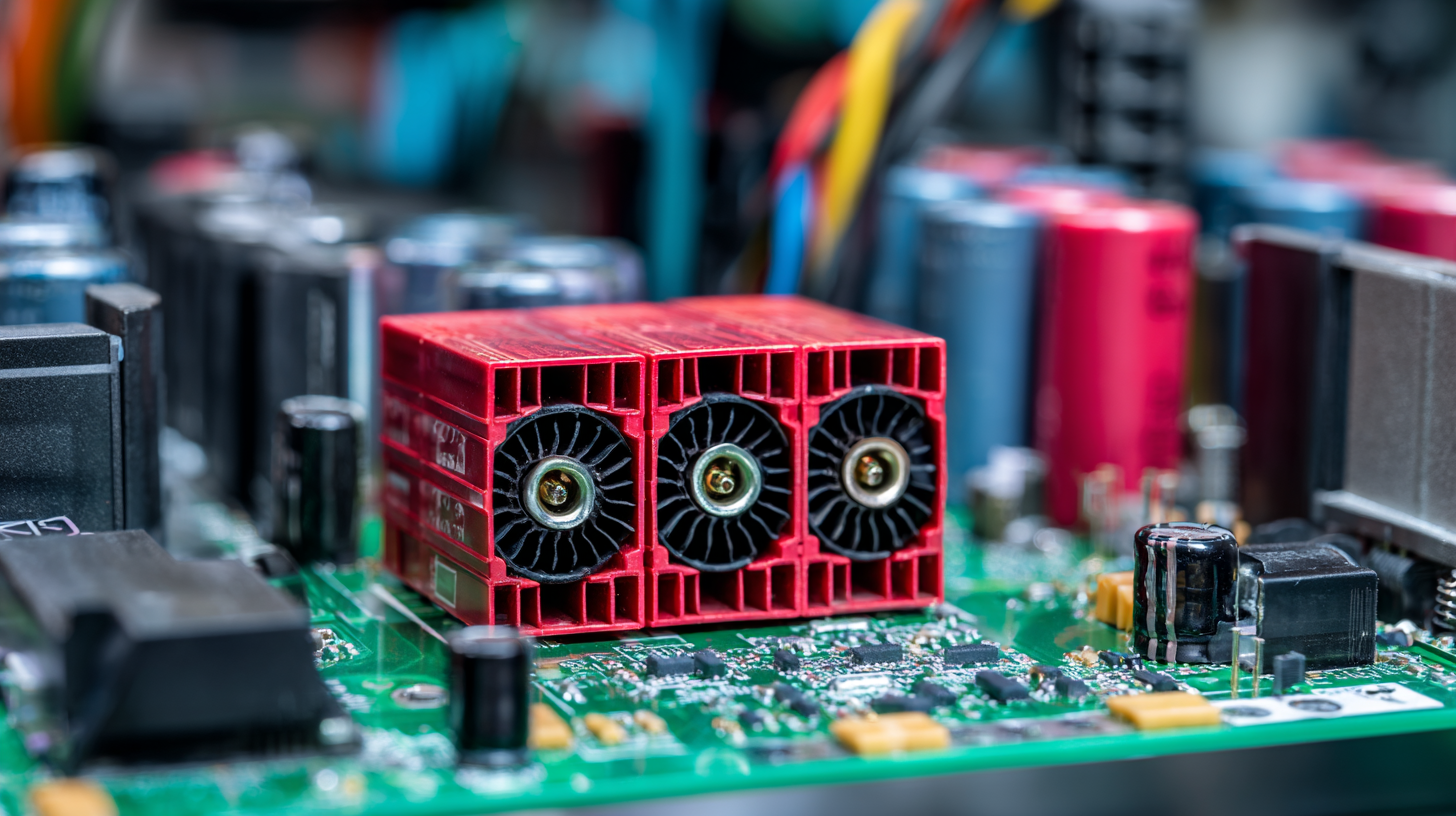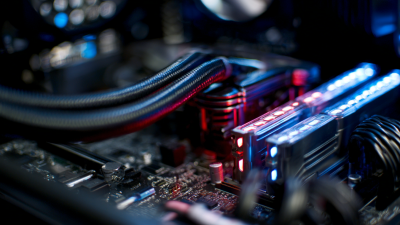Understanding DC Power Supply: Key Components and Their Impact on Modern Electronics
In today's technologically advanced landscape, the role of the DC power supply has become increasingly critical, powering everything from consumer electronics to sophisticated industrial machinery. According to a recent report by Allied Market Research, the global DC power supply market is projected to reach approximately $15.5 billion by 2025, driven by the growing demand for efficient and reliable power solutions.

Understanding the key components of DC power supplies—such as voltage regulators, capacitors, and transformers—can significantly impact the performance, efficiency, and durability of modern electronic devices. As industries strive for higher energy efficiency and reduced operational costs, a comprehensive understanding of how these components interact is essential.
This article explores the intricacies of DC power supply design and its significance in contemporary electronic applications, providing insights that can guide engineers and manufacturers toward optimal solutions.
Key Components of DC Power Supplies and Their Functions
DC power supplies are crucial in modern electronics, offering stable and reliable power for various applications. The main components of these power supplies include transformers, rectifiers, capacitors, and voltage regulators. Transformers play a significant role in voltage conversion and isolation, particularly with advanced technologies like isolated power transfer in SOIC packages. This innovation allows for high-efficiency solutions, such as a 500-mW DC/DC power supply that minimizes electromagnetic interference, which is essential for sensitive electronic devices.
Capacitors and rectifiers work together to ensure smooth and stable output, filtering fluctuations and converting AC to DC. Voltage regulators maintain the necessary output voltage level, which is vital for the performance of digital circuits. As the global bench power supply market is projected to grow from $661.68 million in 2024 to $1,076.28 million by 2032, with a compound annual growth rate (CAGR) of 6.30%, understanding these components and their enhancements is critical for manufacturers aiming to innovate in this competitive landscape.
Tips: When selecting a DC power supply for your project, consider the efficiency ratings of the components, especially if low power loss is a priority. Additionally, keep an eye on market trends to choose a solution that not only meets current needs but is also adaptable to future advancements.
Understanding DC Power Supply: Key Components and Their Impact on Modern Electronics
The Role of Voltage Regulation in Enhancing Electronics Performance
Voltage regulation is a crucial aspect of DC power supply design that significantly enhances the performance of modern electronics. As devices become increasingly sophisticated and power-sensitive, the demand for stable voltage levels becomes paramount. According to a report by MarketsandMarkets, the global voltage regulation market is expected to grow from $3.1 billion in 2020 to $5.5 billion by 2025, representing a crucial investment in ensuring reliability and efficiency in electronic components.
The impact of effective voltage regulation is particularly evident in high-performance computing and communication systems. Fluctuations in power supply voltage can lead to erratic performance, reduced efficiency, and even damage to sensitive components. A study by the International Electrotechnical Commission (IEC) highlights that approximately 20% of electronic failures can be attributed to inadequate voltage regulation, underscoring the importance of robust power supply solutions. By adopting advanced voltage regulation techniques, manufacturers are not only enhancing device longevity but also enabling higher levels of performance and productivity across various applications.
Understanding DC Power Supply: Key Components and Their Impact on Modern Electronics - The Role of Voltage Regulation in Enhancing Electronics Performance
| Component | Function | Impact on Performance | Common Voltage Regulation Method |
|---|---|---|---|
| Transformer | Steps down or steps up AC voltage | Ensures voltage is within specified range for sensitive components | N/A |
| Rectifier | Converts AC to DC | Provides DC voltage for powering electronic circuits | Full-wave Rectification |
| Filter | Smoothens ripple in the DC output | Improves stability of the output voltage | Capacitor Filtering |
| Voltage Regulator | Maintains constant voltage output | Critical for protecting components from voltage fluctuations | Linear and Switching Regulators |
| Load | Devices powered by the power supply | Performance is dependent on stable voltage supply | N/A |
Understanding Current Control Techniques in DC Power Systems
Current control techniques play a crucial role in ensuring the stable and efficient operation of DC power systems. According to a report by MarketsandMarkets, the global DC-DC converter market is projected to reach USD 7.87 billion by 2026, driven largely by the growing demand for electric vehicles and renewable energy sources. This surge in demand emphasizes the need for innovative current control methods to optimize power management in various applications.

One of the predominant techniques utilized in DC power systems is Pulse Width Modulation (PWM). PWM enables precise control over the output voltage and current by varying the duty cycle of the signal. This method not only enhances efficiency but also minimizes power losses, which is critical in applications such as battery management systems. Furthermore, advancements in digital signal processors (DSPs) have significantly improved the implementation of current control algorithms, as highlighted in a study by the Journal of Power Electronics, which noted that DSPs can operate at frequencies up to 1 MHz, allowing for faster response times and improved overall system performance.
In addition to PWM, other current control techniques, such as Hysteretic Control and Linear Control, have gained traction in modern electronics. Hysteretic control offers a simple and effective solution for current regulation, particularly in low-power applications, while linear control provides precision at the cost of efficiency. According to a recent IEEE report, the adoption of these varied techniques allows manufacturers to tailor their power supply systems to meet the specific needs of diverse electronic devices, ultimately pushing the boundaries of performance and efficiency in the ever-evolving landscape of technology.
The Impact of Transformer Design on DC Power Supply Efficiency
The design of transformers plays a critical role in determining the efficiency of DC power supplies. At the core of transformer functionality is its ability to convert alternating current (AC) into the necessary voltage levels for DC applications. The materials used, the geometry of the core, and the winding techniques can significantly influence energy losses within the transformer, which directly impacts overall system efficiency. High-quality magnetic materials and optimized winding configurations can reduce eddy current and hysteresis losses, ensuring that more of the input energy is effectively converted to the desired output.
Moreover, the inclusion of advanced cooling techniques and the development of compact transformer designs contribute to improved performance in modern electronic devices. As power supply demand grows in devices ranging from smartphones to industrial machinery, innovative transformer designs such as toroidal and split-core transformers are gaining prominence.
These designs not only enhance efficiency but also minimize weight and size, aligning with the trend towards miniaturization in electronics. The interplay between transformer design and DC power supply efficiency thus remains a pivotal area of focus for engineers and manufacturers striving to meet today's energy demands while maintaining high performance.
Emerging Technologies and Trends in DC Power Supply Development
In recent years, the demand for efficient and reliable DC power supplies has surged, driven by the proliferation of emerging technologies such as electric vehicles, renewable energy systems, and advanced consumer electronics. According to a report by MarketsandMarkets, the global DC power supply market is expected to reach USD 8.96 billion by 2025, growing at a CAGR of 5.2% from 2020. This growth can be attributed to the increasing need for high-performance power solutions that can support the sophisticated functionalities of modern electronic devices.

One of the key trends shaping the development of DC power supplies is the integration of smart technology. Modern power supplies are now being designed with advanced features like digital control, communication interfaces, and real-time monitoring capabilities. A report from ResearchAndMarkets forecasts that by 2024, the demand for digitally controlled power supplies will account for over 40% of the total market share.
This evolution not only enhances efficiency and reliability but also enables manufacturers to optimize their devices for sustainable performance amid rising energy costs and regulatory pressures. As the electronics landscape continues to evolve, DC power supplies will play a pivotal role in powering the innovations of tomorrow.
Related Posts
-

10 Digital Tips for Optimizing Efficiency in DC DC Power Supply Systems
-

How to Optimize Your High Voltage DC Power Supply for Maximum Efficiency
-

Why DC Supply is Essential for Modern Electronic Devices and Applications
-

How to Select the Best Buck Converter for Efficient Power Management in Your Application
-

How to Choose the Right PSU for Your Computer to Maximize Performance and Efficiency
-

Maximize Efficiency with These Digital Strategies for Your Programmable Power Supply Usage
At Premium PSU, we are specialists in designing and manufacturing power conversion systems for the industrial market. Our product range includes high reliability power supplies from 50W to 72kW.
PREMIUM PSU
C/ Dolors Aleu, 19-21, 2nd Floor
08908 – Hospitalet de Llobregat
Barcelona-SPAIN
t.+34 93 223 26 85


